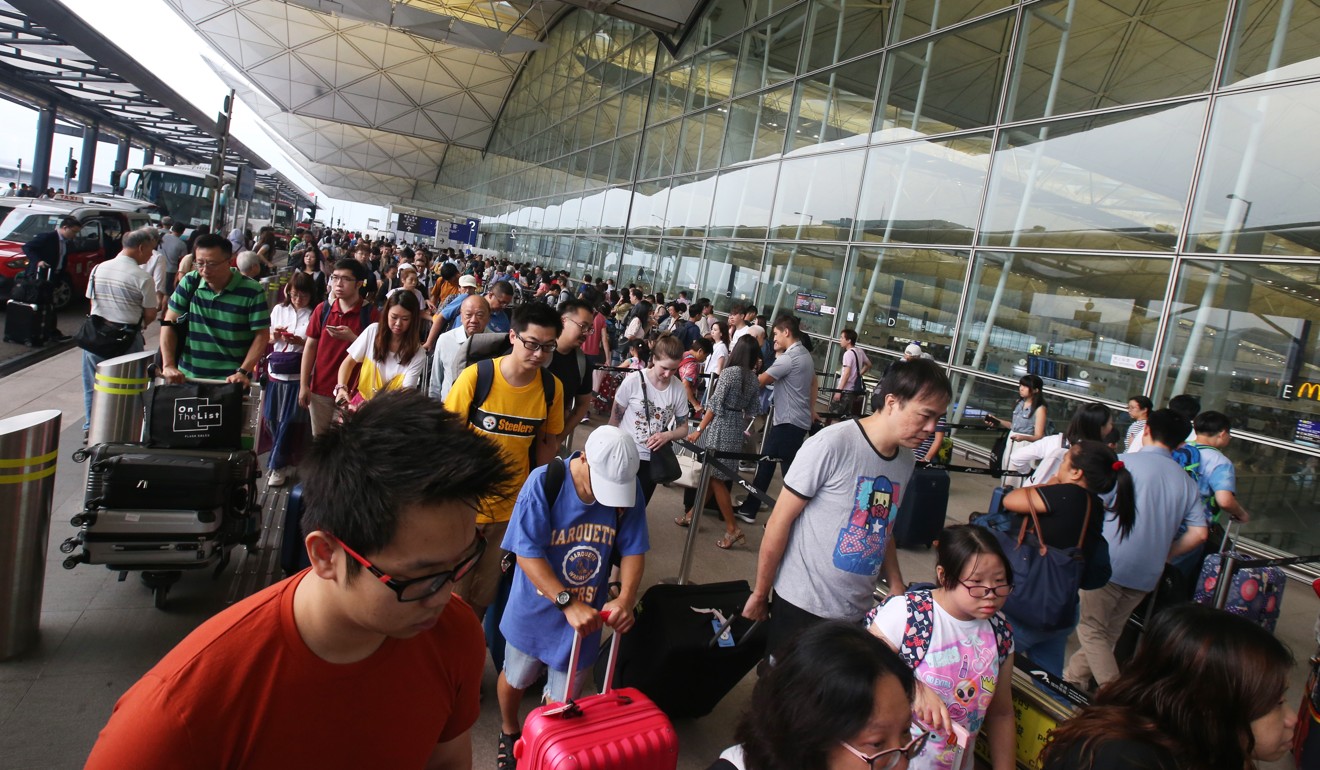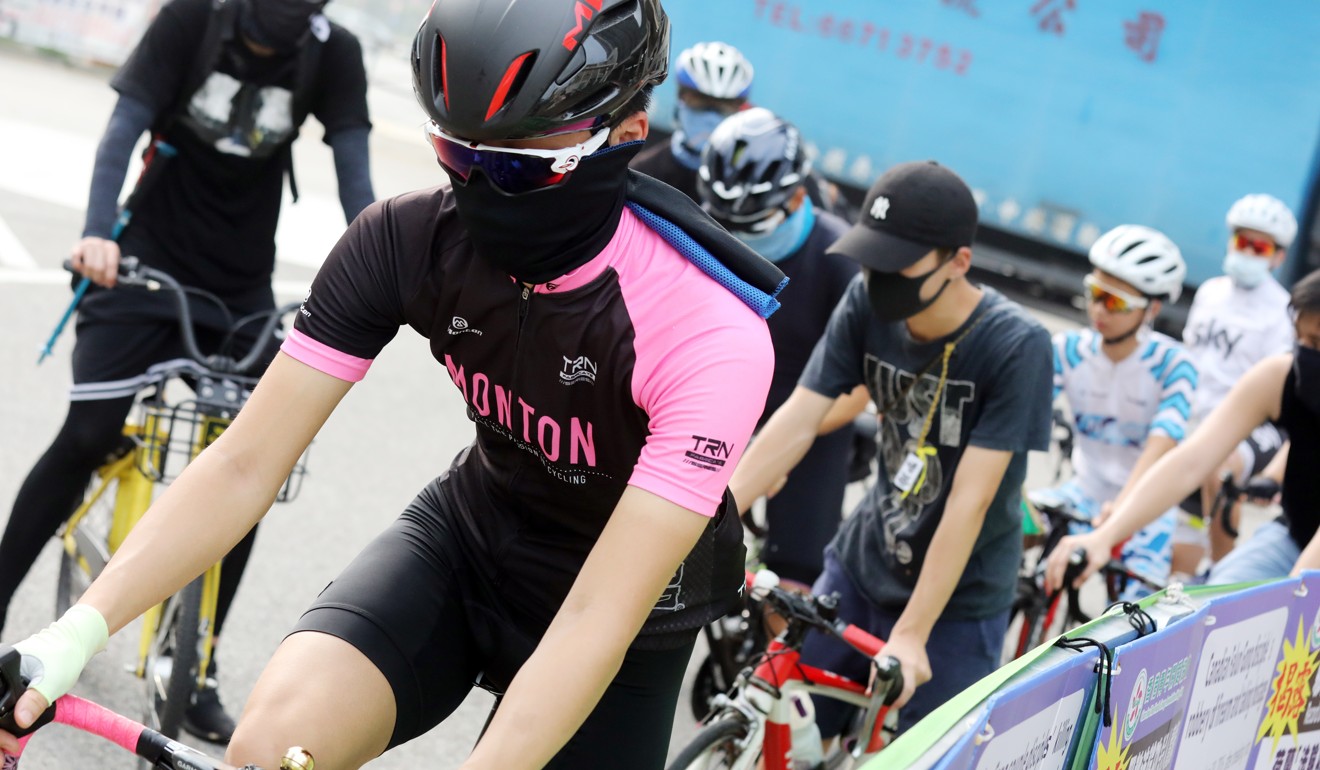
Failing to jam airport-bound traffic on Saturday, Hong Kong’s anti-government protesters vow to return with disruption plan next weekend
- Protesters fail to show up in enough numbers to disrupt traffic by 7am
- They announce their plan to come back with similar disruption next weekend
Anti-government protesters, who failed in their plan to jam airport-bound traffic on Saturday morning, have vowed to make a comeback next weekend.
But though the protesters had planned to skirt the legal order which only covered roads within or near Chek Lap Kok island where the airport complex is located, they did not have enough peers show up to stall traffic or overcrowd transports by the scheduled starting time – 7am.
Authorities prepare contingency plans as new airport protests loom
Later in the day, a group named with the movement’s theme “Stuck with you” issued a message on messaging application Telegram thanking their supporters for carrying out the “tests”. It said the aim of the action was to make aviation workers late for work.

“Our plan this time was inadequate. The Airport Authority adjusted people’s working times and 7am was surely too early. But the test results are very useful,” the post read.
“This event shows that popo [police], the government and the Airport Authority cared so much about our plans and had alternate preparations ready.”
It pledged to organise another similar event called “Suck with you” on September 1.
Initially, the protesters had planned to jam roads by cars and bikes, while also packing airport-bound buses, the Tung Chung Line and the Airport Express. But their plans had little impact on the traffic. There were also reports that police officers intercepted drivers in neighbouring Sunny Bay and bikers in Tung Chung.

Past 9am, a group of about 20 men in cycling gear were riding around Tung Chung, assessing their options after they failed in their protest bid to disrupt traffic.
“The number of people who showed up today is a lot fewer than I expected,” said Eric Chan, a medical worker who came at around 7am.
“Maybe Hong Kong people just can’t help being late,” he said in jest.
Maybe Hong Kong people just can’t help being late
Chan, who took the morning off from work to cycle, said he had either watched or taken part in all of the major protests since early June.
By 11am, the intended end time, the disruption plans died down, with protesters evaluating the movement both online and offline.
Kelvin, a 24-year-old apprentice worker, was in Tung Chung station with around 20 other protesters discussing their next move. He said the low turnout was either due to the fact that the scheduled time was too early, or that the airport had issued an injunction, or that people were planning to take part in the afternoon protest in Kwun Tong instead.

“I’m just following others. For me, no matter what protest action is next, we just need to keep doing everything possible to ensure the movement does not cool down,” he said.
Despite the little impact on the traffic, some passengers chose to set off earlier to the airport.
Wouter Geutjes, 35, a native of Amsterdam working in Hong Kong, arrived at the airport at 7.30am for his 12.20pm flight.
“I just adjusted my time to ensure that I arrived early,” he added.
Harry Ho, 25, who works in sales, said he set out around an hour earlier than usual for a 10.50am flight to Japan in anticipation of delays from protests, which he described as only a “minor inconvenience”.
“I agree with the protesters to some extent, but just don’t affect us too much,” he said. “Their actions are quite effective in attracting attention because it’s related to the airport.”

But Chris Cheung, an airport employee, chose not to leave earlier for work. “I wouldn’t mind even if the protest affects my commute because the things they [the protesters] want to achieve matter more,” he said.
But MTR staff at the Airport Express in Central did not take any chance and deployed more employees to guide passengers to trains. Cordons were set up in front of platform doors, with a reminder that the carriages were “reserved for passengers going to the airport station”.
At the Express stop in the airport, security officers were on standby.
Protest crisis hammers Hong Kong’s core industries – with no end in sight
The planned disruptions, like others in nearly three months of protests that have rocked the city, were aimed at forcing the government to respond to demands, including the formal withdrawal of the now-shelved extradition bill and the setting up of an independent inquiry into the alleged use of excessive force by police.
A peaceful five-day mass sit-in at the airport descended into chaos a little over a week ago, with protesters blocking passengers from leaving, scuffling with them, and even detaining two mainland Chinese men. A total of 979 flights were cancelled on Monday and Tuesday last week.
Extending the injunction order sought by the Airport Authority on Friday, Mr Justice Wilson Chan Ka-shun noted that while the disturbances had subsided, the threat remained, including repeated calls on social media to obstruct passengers.
The court order bans unlawful and wilful obstruction of the airport and roads within or near Chek Lap Kok, confines demonstrations to “strictly within” two designated areas in the arrival hall, and bars anyone from “inciting, aiding and/or abetting” any obstructive act. The order does not stipulate which roads near the airport cannot be blocked.




